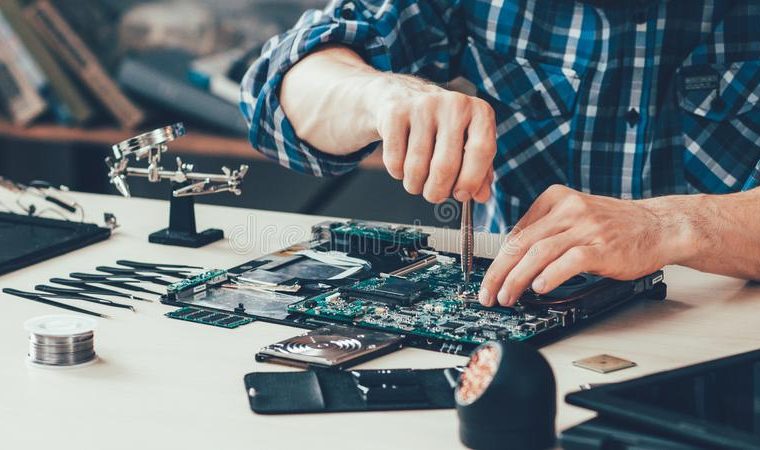
Have you ever noticed that your computer runs slower than it used to? That’s a pretty common issue, and it can cause frustration and wasted time. The good news is that there are ways to make your computer run faster and better. In this blog post, we’ll discuss how to maximize your computer performance, from defragging your hard drive to uninstalling unnecessary programs. We’ll also take a look at how you can increase the security of your system, so you can stay safe from malicious attacks. So whether you want to speed up an old laptop or just tune up a new one, this article will show you how to optimize your PC for maximum performance.
Check your computer’s specifications
Checking your computer’s specifications is a great way to ensure that your system is able to handle the demands of running demanding applications. There are a few key things to look for when checking your specs:
-The processor, or CPU. This is the heart of your system, and a faster processor will generally result in better performance.
-The amount of memory, or RAM. This is important for two reasons: first, more RAM means that your system can keep more information in memory, which can speed up access time; second, having more RAM can help prevent your system from crashing if it runs out of memory while running a demanding program.
-The graphics processing unit, or GPU. This is what handles all the calculations needed to render images on your screen. A faster GPU will generally mean better graphics quality and smoother gameplay.
-The storage capacity of your hard drive. This is important if you have a lot of data that you want to keep on your computer, such as music, videos, or photos. A larger hard drive will also give you more room to install programs and games.
Delete unnecessary files and programs
If your computer is running slow, one of the first things you should do is delete unnecessary files and programs. This will free up space on your hard drive and help your computer run more efficiently.
To delete unnecessary files and programs, follow these steps:
1. Open the Start menu and select Control Panel.
2. In the Control Panel, click on the Programs and Features icon.
3. This will open a list of all the programs installed on your computer. Look through the list and find any programs that you don’t use or need anymore. To uninstall a program, simply click on it and then click the Uninstall button at the top of the window.
4. Once you’ve uninstalled any unwanted programs, go to your Downloads folder (usually located in your Documents folder) and delete any old files that you no longer need. If you have other folders where you save downloaded files, go through them as well and delete anything that’s no longer needed.
5. Finally, empty your Recycle Bin to completely remove the deleted files from your computer.
By following these steps, you can quickly delete unnecessary files and programs from your computer, freeing up space and helping it to run more efficiently.”
Update your operating system and software
It’s important to keep your operating system and software up to date in order to maximize your computer performance. Here are some tips on how to do so:
-Make sure you are running the latest version of your operating system. To do this, check for updates in the Settings app or System Preferences, depending on your OS.
-Update your software regularly. Most software can be set to update automatically, but it’s a good idea to check for updates manually from time to time as well.
-If you’re not prompted to update your software and it’s been a while since you last checked, go ahead and download the latest version from the developer’s website.
-Be careful when installing updates, as they can sometimes cause problems with compatibility. If you’re not sure whether or not an update is right for you, consult with someone who is more tech-savvy before proceeding.
Use disk cleanup tools
When it comes to maximizing your computer performance, one of the best things you can do is to use disk cleanup tools on a regular basis. These tools help to remove unnecessary files from your computer that can take up valuable space and slow down your system.
There are a number of different disk cleanup tools available, but we recommend using CCleaner. This tool is easy to use and it will clean up your hard drive quickly and effectively. Simply launch CCleaner and click on the “Cleaner” button. Then, select the drives that you want to clean and click “OK”. CCleaner will then scan your selected drives and remove any unnecessary files.
If you have never used a disk cleanup tool before, we highly recommend giving CCleaner a try. It is an essential part of maintaining a fast and efficient computer.
Defragment your hard drive
Your computer’s hard drive can become fragmented over time, which can lead to decreased performance. Defragmenting your hard drive can help to improve performance by reorganizing the files on your hard drive so that they are stored more efficiently.
There are a few different ways that you can defragment your hard drive. You can use a built-in utility that comes with your operating system, or you can download and run a third-party defragmentation tool or get it done from a reputabe computer repair service.
If you decide to use a built-in utility, you’ll need to open the Disk Defragmenter tool. This tool is typically located in the Accessories folder in the Start menu. Once you’ve opened the tool, select the hard drive that you want to defragment and click the Analyze button. The tool will then analyze your hard drive and give you a report on how fragmented it is. If the fragmentation level is high, you’ll need to click the Defragment button to start the defragmentation process.
Third-party defragmentation tools typically offer more features than built-in tools, such as the ability to schedule defragmentation jobs and defragment multiple drives at once. Some of these tools also allow you to create bootable media so that you can defragment your hard drive even if Windows won’t start up properly.
Optimize your virtual memory
One of the best ways to maximize your computer performance is to optimize your virtual memory. Virtual memory is a type of computer data storage that stores information in both physical and logical memory locations. By optimizing your virtual memory, you can improve your computer’s performance by making sure that it has enough physical memory to store all of the data it needs and by making sure that the data is stored in an efficient way.
There are a few things you can do to optimize your virtual memory:
1. Make sure you have enough physical memory. If your computer doesn’t have enough physical memory, it will start to use virtual memory more often and this can slow down your computer’s performance. To check how much physical memory you have, open the Task Manager and go to the Performance tab. Under the Memory heading, you’ll see how much total, used, and available physical memory you have. If you’re using Windows 10, you can also click on the Change button under the Virtual Memory heading to change the size of your paging file.
2. Store frequently used data in a dedicated location. When data is stored in a dedicated location, it can be accessed more quickly than if it was stored in a general location. For example, if you frequently use a certain program, storing its data in a dedicated location will help your computer access that data more quickly when you launch the program. You can store data in a dedicated location by creating a new partition on your hard drive or by
Conclusion
In conclusion, maximizing your computer performance doesn’t have to be difficult. By following the tips outlined in this article, you can quickly and easily improve your computer’s performance so that it runs faster and more efficiently. So don’t wait any longer – take action today and enjoy improved performance from your machine!



